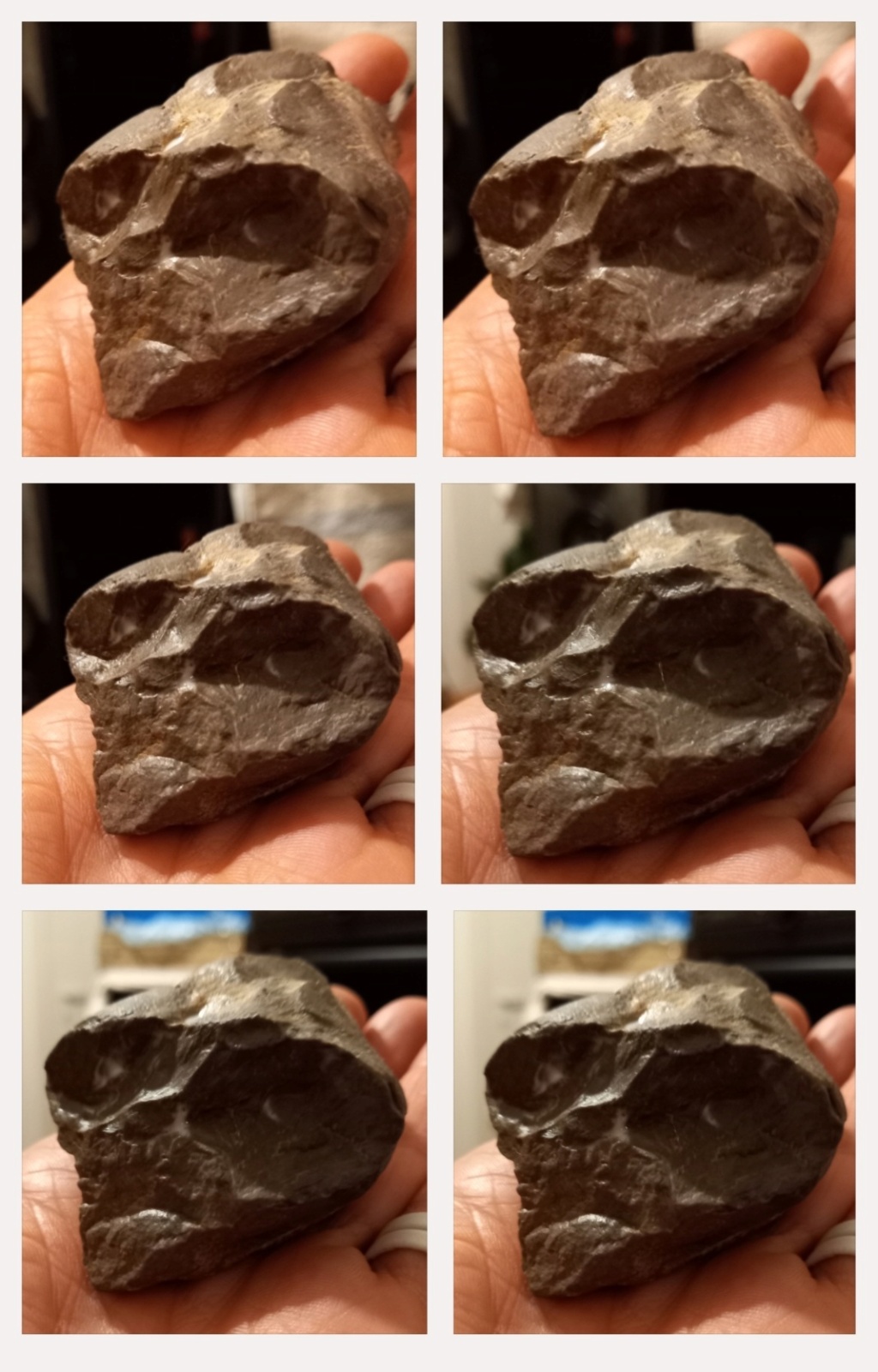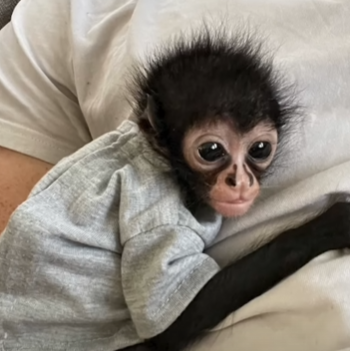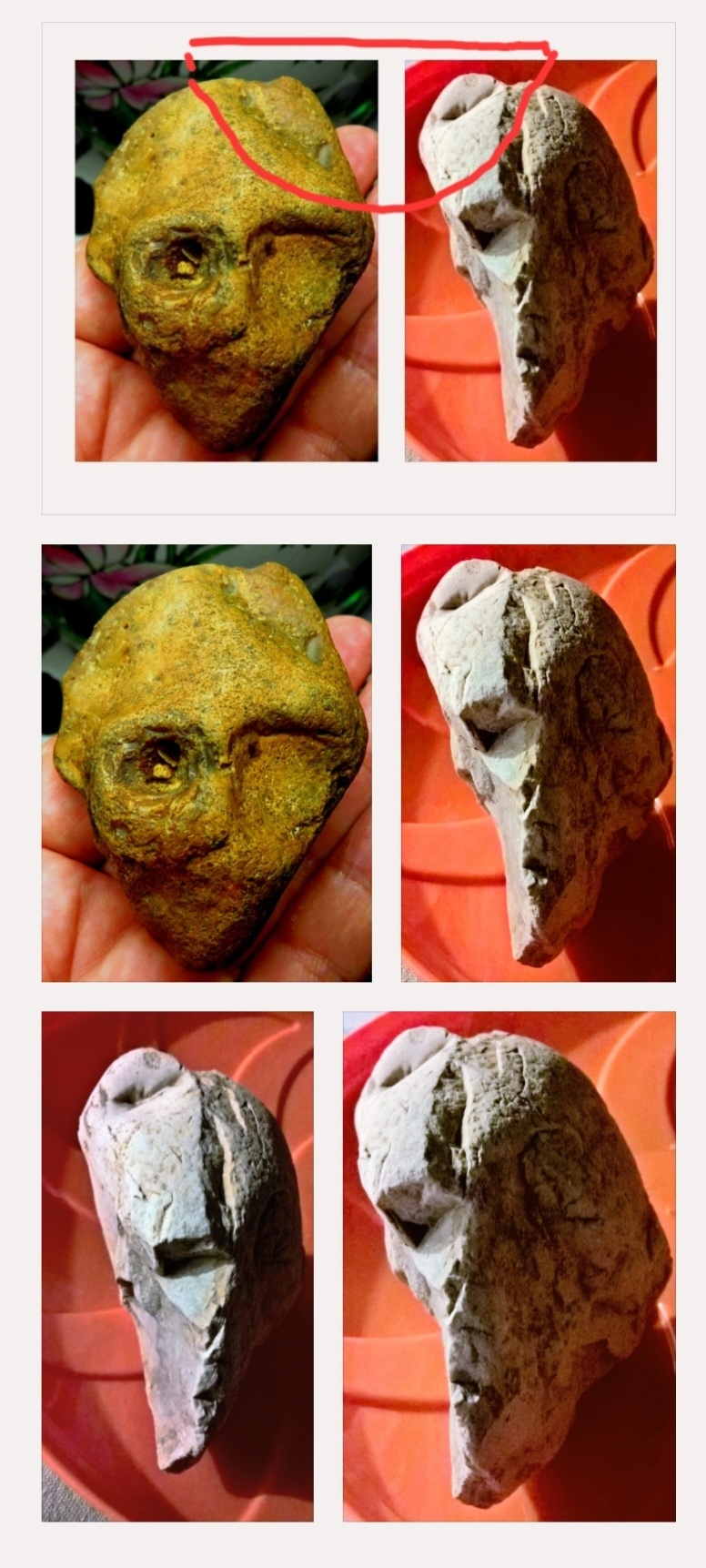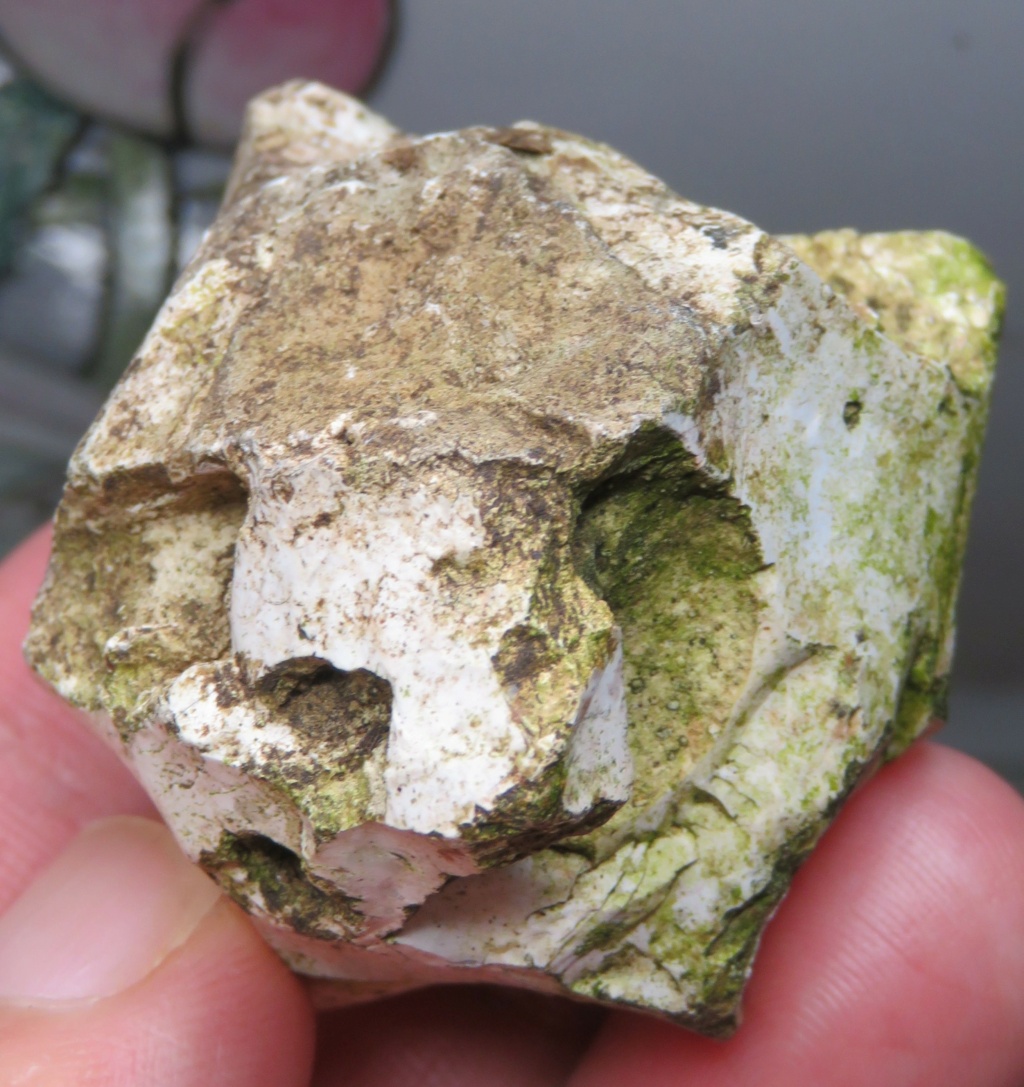 Portable rock art - Faces
Portable rock art - Faces
Thu Jun 08, 2023 11:01 pm
Welcome to the captivating section dedicated to portable rock art face frontals! Here, we explore the intriguing depictions of ape-like faces, including chimpanzees and suspected Australopithecines besides others. Within this category, you'll discover common facial features and distinct topologies, such as the extended tongue observed in chimp-like faces. This section is exclusively dedicated to the fascinating world of ape-like depictions.
Take a closer look at the remarkable find below, showcasing a common face description often associated with suspected Australopithecus. This exceptional example exhibits undeniable evidence of cognition, design, and agency through its distinctive shape. Notably, it features black pigment used for eye detailing, adding an intriguing touch to the artwork. Additionally, pay attention to the interpreted tongue feature, which I will explore further in this thread.

Next, we encounter a captivating piece that defies precise identification, but its incredible detail is simply awe-inspiring. The level of realism is so remarkable that one might mistake it for a photograph if we had a direct comparison with the creature itself! Take your time to examine this piece closely, as it reveals multiple faces waiting to be discovered. One particularly striking feature is the inclusion of eye lashes, a testament to the artistic prowess showcased in this ancient artifact.
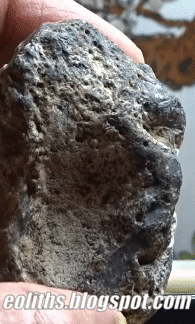
Join the discussion and share your thoughts on these remarkable portable rock art face frontals. Let's delve deeper into the artistic expressions, symbolism, and possible interpretations of these intriguing finds!
Take a closer look at the remarkable find below, showcasing a common face description often associated with suspected Australopithecus. This exceptional example exhibits undeniable evidence of cognition, design, and agency through its distinctive shape. Notably, it features black pigment used for eye detailing, adding an intriguing touch to the artwork. Additionally, pay attention to the interpreted tongue feature, which I will explore further in this thread.

Next, we encounter a captivating piece that defies precise identification, but its incredible detail is simply awe-inspiring. The level of realism is so remarkable that one might mistake it for a photograph if we had a direct comparison with the creature itself! Take your time to examine this piece closely, as it reveals multiple faces waiting to be discovered. One particularly striking feature is the inclusion of eye lashes, a testament to the artistic prowess showcased in this ancient artifact.

Join the discussion and share your thoughts on these remarkable portable rock art face frontals. Let's delve deeper into the artistic expressions, symbolism, and possible interpretations of these intriguing finds!
amytaylorlangston@gmail.c and WesyKyCreekWalker like this post
 Portable rock art
Portable rock art
Sat Jun 10, 2023 4:41 pm
amytaylorlangston@gmail.c and WesyKyCreekWalker like this post
 Re: Portable rock art - Faces
Re: Portable rock art - Faces
Mon Jun 12, 2023 1:16 pm
Another face description in this portable rock art with some possible composite additions, these seem to be held in place by a fixing agent containing iron. The face has some great symmetry, and a nice horizontal brow ridge feature giving great evidence of cognition, besides many obvious flake removals around the left eye feature. One of the inserted eye features appears as an almost perfectly spherical white stone pebble.




 Portable rock art
Portable rock art
Tue Jun 13, 2023 1:15 pm
This is another piece with an obvious and even pigmented composite eye feature, the fixing substance and eye pupil detail appears as the normal black water proof tar like substance. Even the other eye has possible composite additions. This find has quite a few faces, and some interesting profiles, but I find the chimp like face profile with extended tongue feature very interesting as I have interpreted this feature quite a few times in both my 'eolith' finds and my finds from my original find site 'the original white flint tool and poly iconic art assemblage'. The three pictures below display some of its many features.


This one I interpret as a possible elephants trunk tip, and when flipped an owl face frontal can easily be interpreted.

The tip of an elephants trunk for comparison:



This one I interpret as a possible elephants trunk tip, and when flipped an owl face frontal can easily be interpreted.

The tip of an elephants trunk for comparison:

WesyKyCreekWalker likes this post
 Portable rock art, Stone Mask
Portable rock art, Stone Mask
Wed Jun 28, 2023 12:35 pm
I've just posted a write up on this really neat face frontal portable rock art find, in the form of a figure stone mask. check out the link here > Figure Stone Mask
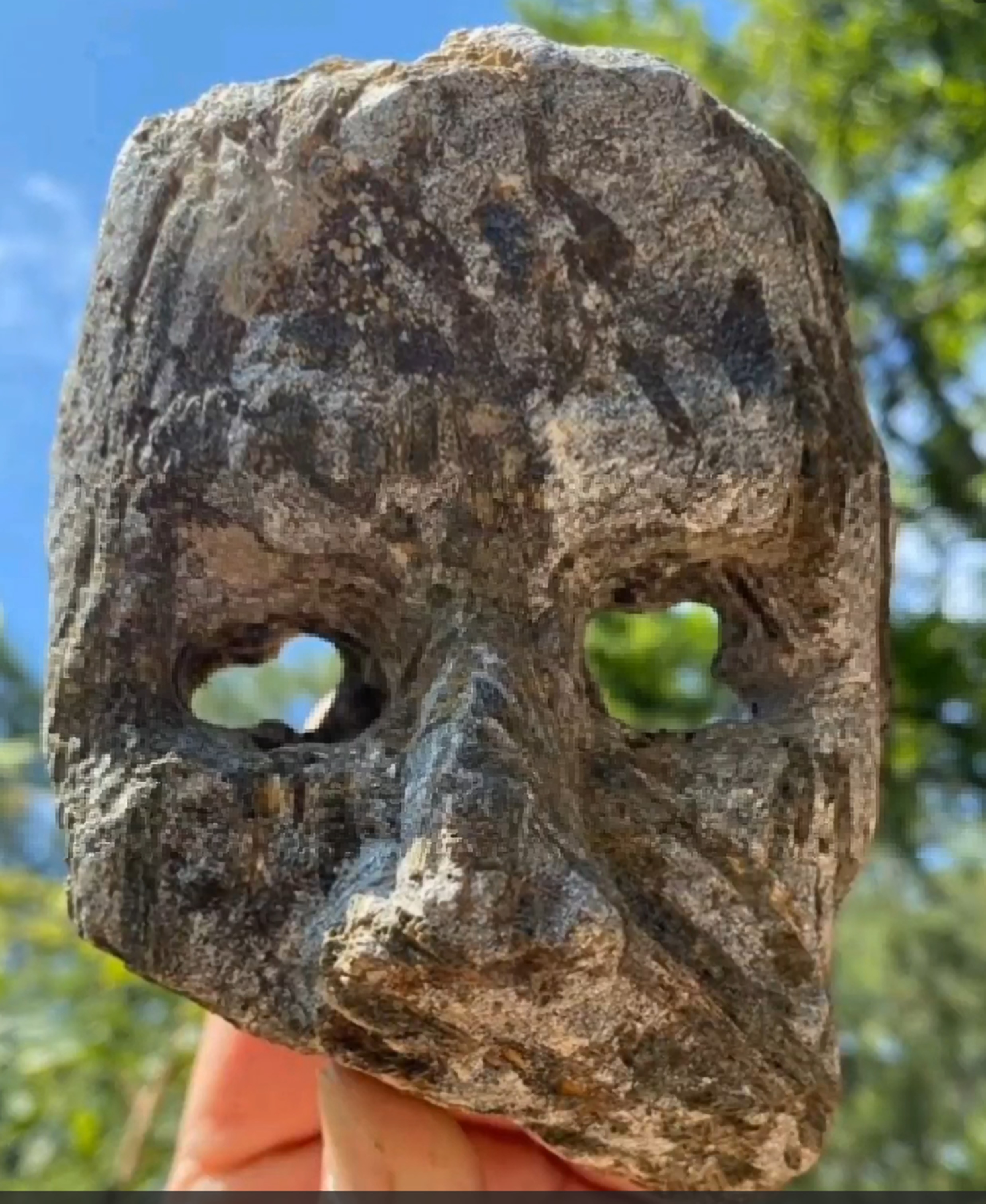

WesyKyCreekWalker likes this post
 Re: Portable rock art - Faces
Re: Portable rock art - Faces
Thu Jul 27, 2023 11:06 am
A possible skull frontal impression in this worked white flint find from my original site, again this one is best viewed with squinted eyes or on a mobile device, there are a lot of workings here, I've yet to put effort into deciphering any further possible figuration here, but probable elephant half right facing.


 Re: Portable rock art - Faces
Re: Portable rock art - Faces
Thu Aug 17, 2023 8:47 am
Another face frontal for you, prehistoric mask, effigy stone, portable rock art. Again this looks like a baby crying out, very similar to another I've found with the rings around the eyes and a sad looking face here on my blog ------> Ancient Effigy Stone - Eoliths
This find has some evidence of cognition, the interpreted mouth displays heavily water warn flake removal as the natural surface of the flint pebble is not present here, these smooth areas appear as two parallel 'lips', and demonstrate possible pigment staining.
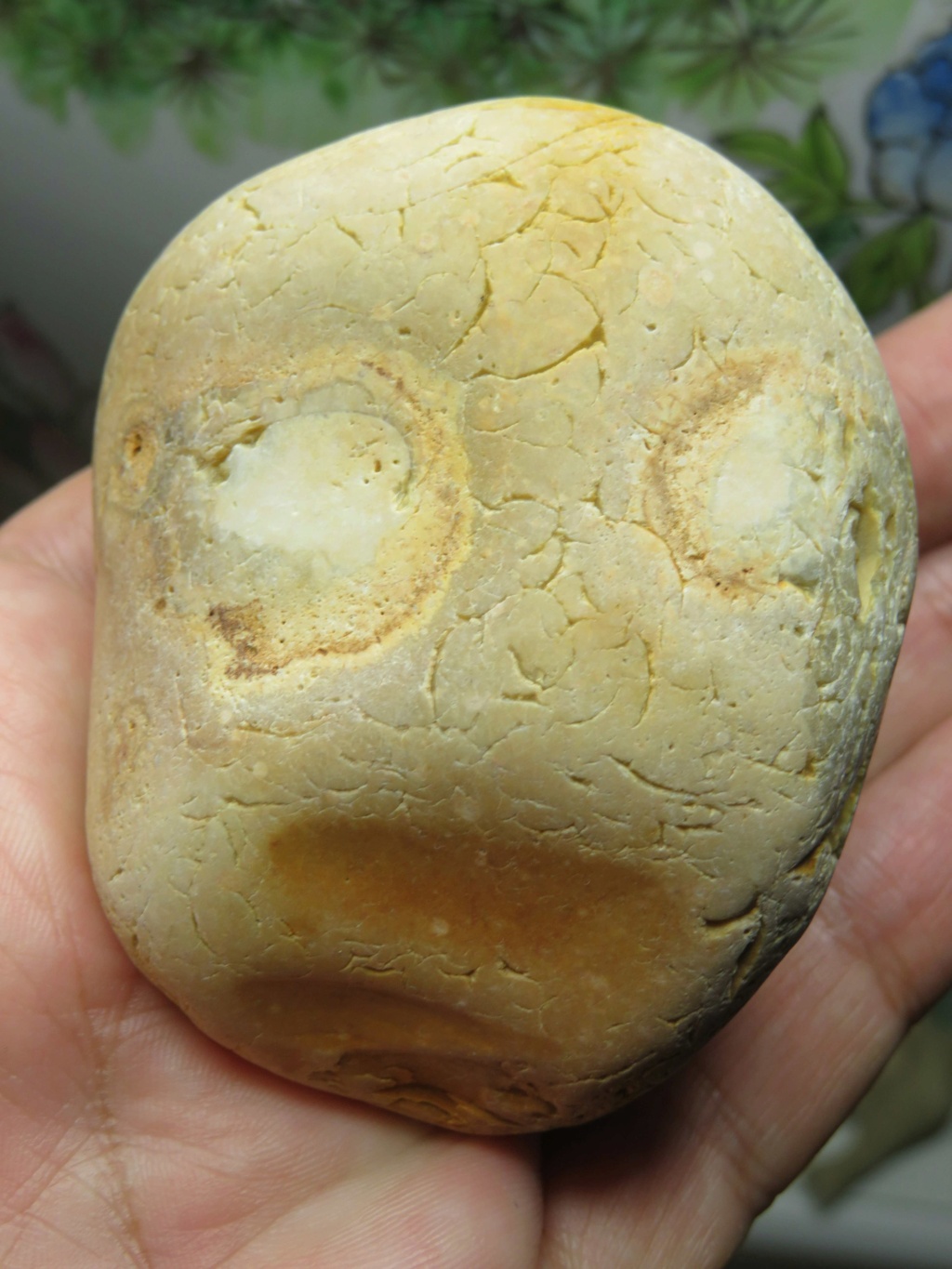
This find has some evidence of cognition, the interpreted mouth displays heavily water warn flake removal as the natural surface of the flint pebble is not present here, these smooth areas appear as two parallel 'lips', and demonstrate possible pigment staining.

 Portable rock art
Portable rock art
Fri Aug 18, 2023 1:53 pm
A portable rock art find from Paolo Borsato in Italy. I interpret this one simply as ape, possibly a chimpanzee relative, but notice how the muzzle area has another face frontal description in the last of the sequence when turned 90 CCW, also notice the possible pigmentation used in detailing one of the apes eyes. I'm sure there is more to see here.


 Portable rock art Oldowan pebble chimp face
Portable rock art Oldowan pebble chimp face
Tue Oct 03, 2023 6:20 pm
I recently came across a fascinating artifact that fits exactly with my redefined understanding of ancient art. This isn't just any ordinary cutting tool but a worked pebble crafted in the distinct Oldowan style, reminiscent of eoliths. What sets this piece apart is its intricately detailed design: on both sides, there's a pronounced chimp face profile. Impressively, the artifact showcases a detailed mouth, hair, eyeball, and even a pupil! As is nearly always the case with my art finds, there is likely much more to see here.
If we rely on the geological layers from which it was extracted, this artifact could potentially be among the oldest works of art ever discovered. It's hard to argue against its artistic nature given the evident craftsmanship and detail. This discovery beckons the question: were our ancestors creating artistic representations far earlier than mainstream archaeology wants you to know, as they push upon us a false evolution narrative?
Share your thoughts, and let's delve into this riveting piece of prehistoric artistry!

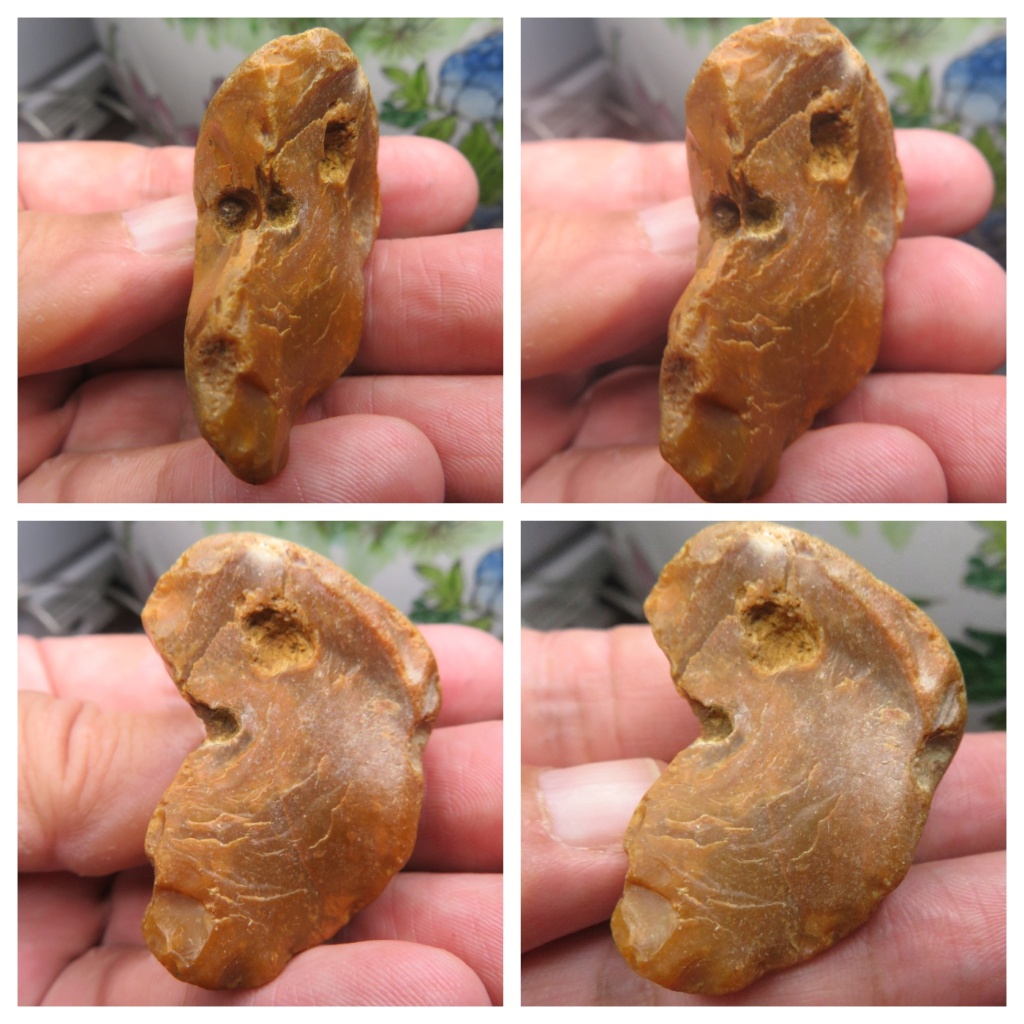
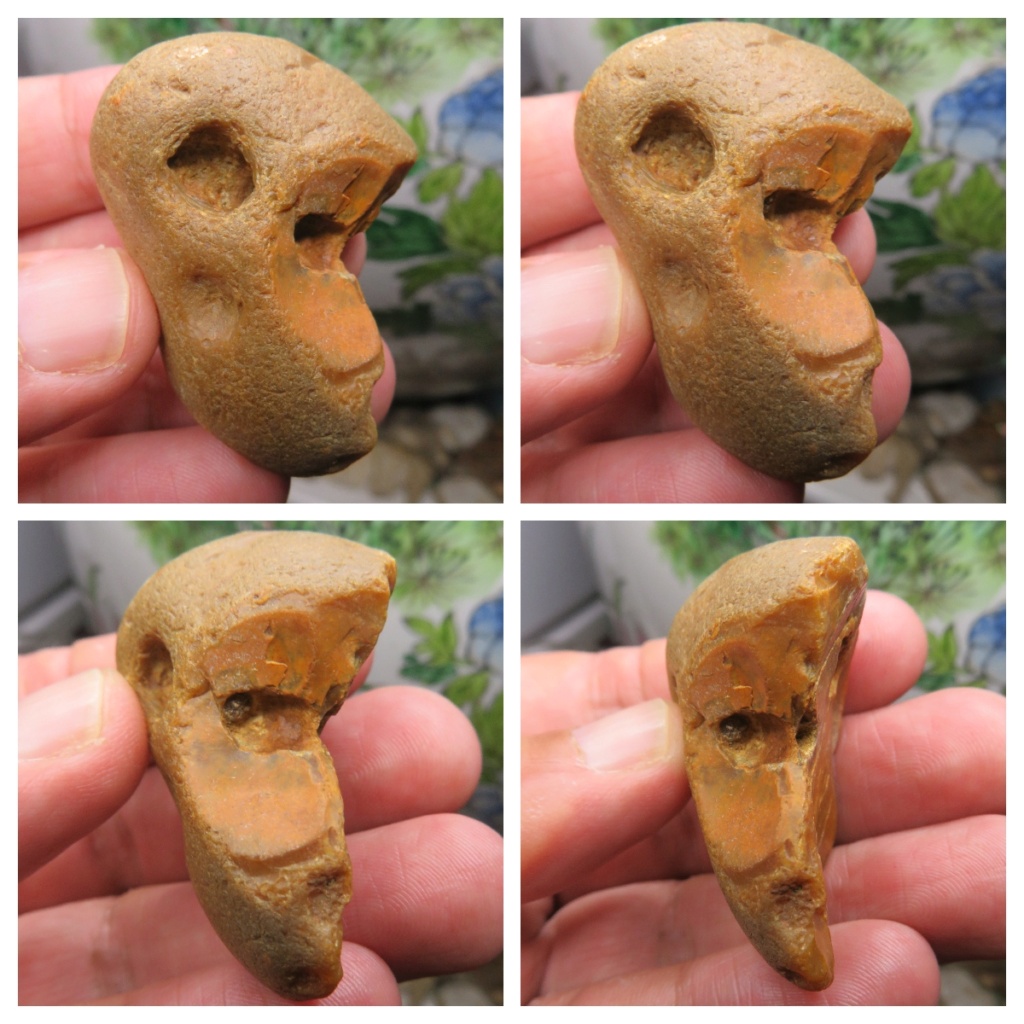
If we rely on the geological layers from which it was extracted, this artifact could potentially be among the oldest works of art ever discovered. It's hard to argue against its artistic nature given the evident craftsmanship and detail. This discovery beckons the question: were our ancestors creating artistic representations far earlier than mainstream archaeology wants you to know, as they push upon us a false evolution narrative?
Share your thoughts, and let's delve into this riveting piece of prehistoric artistry!



 John
John- Posts : 29
Join date : 2023-07-12
 Monkey ears
Monkey ears
Wed Oct 04, 2023 12:30 am
Looking at my monkey down the page.
Though no where near as nice of a art piece, both where made with elephants for the ears. Coming from 1/2 the world apart I find it extremely interesting. Where these artist beings commicating world wide? I'll try and send the other side of my monkey here in awhile. The topography may help with dating these works.
Though no where near as nice of a art piece, both where made with elephants for the ears. Coming from 1/2 the world apart I find it extremely interesting. Where these artist beings commicating world wide? I'll try and send the other side of my monkey here in awhile. The topography may help with dating these works.
 worldwide palaeolithic
worldwide palaeolithic
Wed Oct 04, 2023 8:58 am
Being the original 'world wide palaeolithic language/art proponent and researcher' And the first to describe the world wide topology, convention, subject and common combinations, I don't believe its quite as you describe. There is clearly a link, that is world wide, but the time periods are likely so vast that it could be that the use of these items and the common convention spread either with one artistic people, or was used by many differing human related species, with a common ancestry. I think its just humans, or a very close relation because we are the only species 100% proven to use figurative art, and it sets us apart from everything else on the planet. One could argue that say a swan/elephant combo is obvious and could be invented totally independently (even by different artistic species) as they easily jigsaw together say by a person wishing to convey multiple species in a handy single rock.
 Re: Portable rock art - Faces
Re: Portable rock art - Faces
Wed Oct 04, 2023 9:08 am
Did Dali copy palaeolithic sculpture? no I don't think so, we don't have any evidence this prehistoric art combo was even discovered in his time, as its another one of mine.

 Re: Portable rock art - Faces
Re: Portable rock art - Faces
Sun Oct 15, 2023 8:07 am
Hello fellow Portable Rock Art enthusiasts,
Today, I'm excited to delve into the captivating world of ancient face effigies and shed light on a remarkable aspect that sets them apart: their intricately detailed and almost perfectly symmetrical eye features. These stunning creations from the past offer a unique insight into the artistry and predictability of the faces we encounter.
Authenticity Through Detailed and Symmetrical Eyes:
One of the most intriguing aspects of ancient face effigies is the meticulous forethought that went into sculpting their features, but with just two high precision flake removals . The eyes, in particular, have long been considered windows to the soul, and ancient artisans understood the importance of capturing this essence. These effigies often display an astonishing level of detail, with pupils, irises, produce by precision and intimate knowledge of the material.
. The eyes, in particular, have long been considered windows to the soul, and ancient artisans understood the importance of capturing this essence. These effigies often display an astonishing level of detail, with pupils, irises, produce by precision and intimate knowledge of the material.
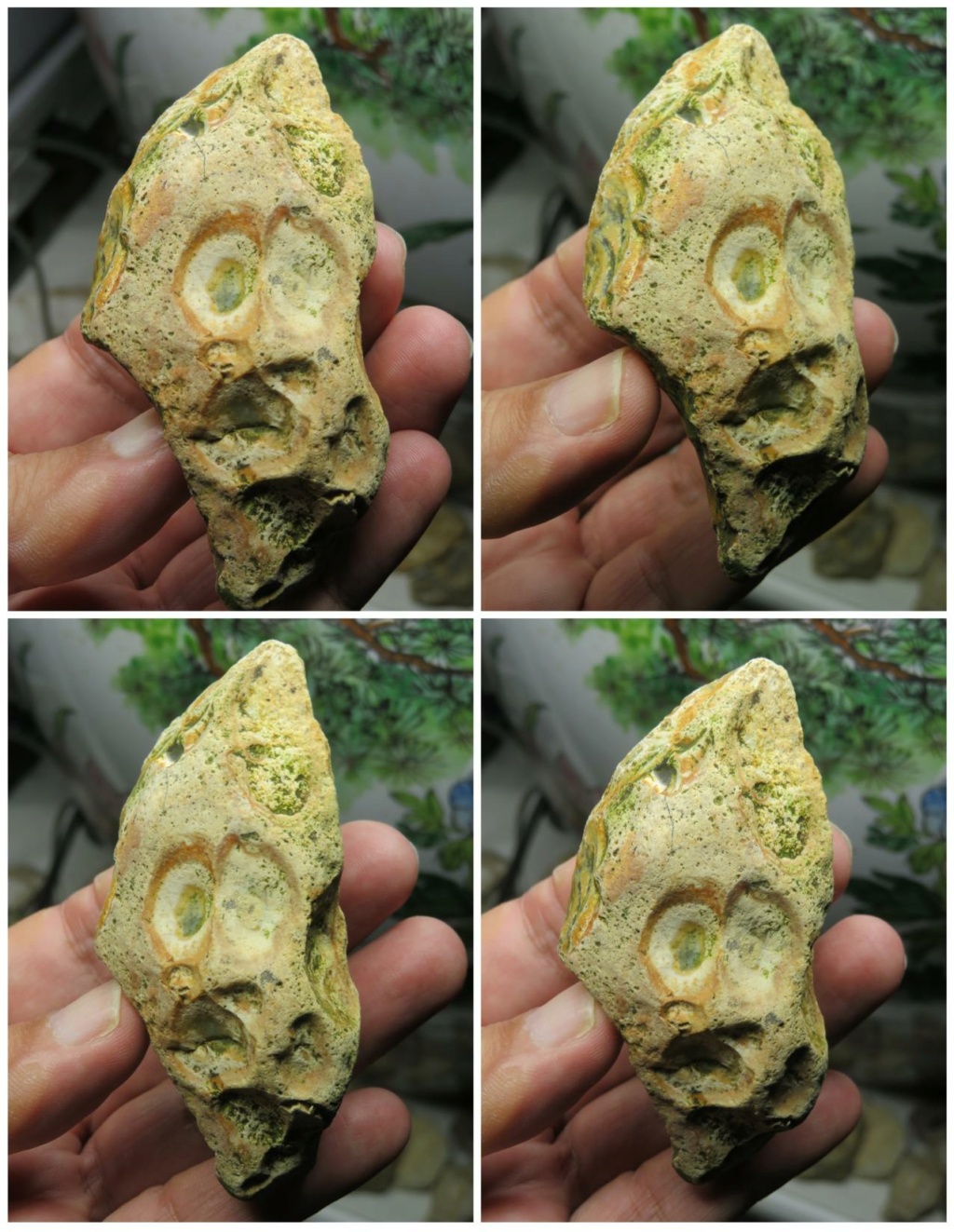

The close symmetry of the eyes in these effigies is nothing short of awe-inspiring. The precise alignment and balance of the eyes not only showcase the artist's skill but also highlight the cultural significance of symmetry in ancient art. This symmetry was often symbolic, representing harmony, balance, and order, which were highly regarded values in many ancient societies.
Not only that, this is one of the expected faces to find, any that know true portable rock art well enough and have seen a large enough collection of genuine finds know this face well already, yes because science is predictable, and this is a sculptured piece of ancient science. And predictability again, a sad expression and even an extended tongue can be interpreted hear, something I've revealed quite a few times before.
These effigies continue to intrigue and inspire, serving as a window into the past and a testament to the enduring fascination with human faces throughout ancient history.
So, the next time you encounter an ancient face effigy, take a moment to marvel at the intricacy of its eyes and the cultural heritage it represents. Share your thoughts and insights below; I'd love to hear your perspectives on this fascinating topic!
Today, I'm excited to delve into the captivating world of ancient face effigies and shed light on a remarkable aspect that sets them apart: their intricately detailed and almost perfectly symmetrical eye features. These stunning creations from the past offer a unique insight into the artistry and predictability of the faces we encounter.
Authenticity Through Detailed and Symmetrical Eyes:
One of the most intriguing aspects of ancient face effigies is the meticulous forethought that went into sculpting their features, but with just two high precision flake removals


The close symmetry of the eyes in these effigies is nothing short of awe-inspiring. The precise alignment and balance of the eyes not only showcase the artist's skill but also highlight the cultural significance of symmetry in ancient art. This symmetry was often symbolic, representing harmony, balance, and order, which were highly regarded values in many ancient societies.
Not only that, this is one of the expected faces to find, any that know true portable rock art well enough and have seen a large enough collection of genuine finds know this face well already, yes because science is predictable, and this is a sculptured piece of ancient science. And predictability again, a sad expression and even an extended tongue can be interpreted hear, something I've revealed quite a few times before.
These effigies continue to intrigue and inspire, serving as a window into the past and a testament to the enduring fascination with human faces throughout ancient history.
So, the next time you encounter an ancient face effigy, take a moment to marvel at the intricacy of its eyes and the cultural heritage it represents. Share your thoughts and insights below; I'd love to hear your perspectives on this fascinating topic!
 Ancient Wonders: Portable Rock Art Effigies
Ancient Wonders: Portable Rock Art Effigies
Wed Oct 25, 2023 12:04 pm
Hello fellow forum members,
Today, I'm thrilled to share with you two intriguing discoveries in the realm of portable rock art: enigmatic face effigies that may offer a glimpse into the world of Australopithecus. These remarkable finds, characterized by their unique features and artistic detailing, shed light on our prehistoric past and the enduring fascination with stone figurines and effigies.
Portable Rock Art: A Gateway to Our Ancestral World:
Portable rock art is a fascinating avenue for exploring the rich tapestry of prehistoric art. These miniature stone creations provide us with a window into the artistic expressions of our ancient ancestors, allowing us to connect with their thoughts, beliefs, and creativity across time.
The Australopithecus Connection:
The first discovery showcases a possible Australopithecus face frontal, a representation that could hold profound implications for our understanding of early hominins. The face features, though subtle, bear resemblance to the facial structures associated with Australopithecus. The intricacies of this rock art piece evoke a sense of wonder and curiosity about the artistic prowess of our distant relatives.
Pigmented Eye Feature Mystery:
The first of the face effigies we'll be discussing displays an enigmatic pigmented eye feature. This detail raises intriguing questions about the use of pigments in ancient art and its potential significance. Other possible features include a possible crest, and a stripe down the centre of the face, both features I've displayed before in this face type. Could this hint at ritualistic or symbolic practices among early humans? It's a mystery worth exploring further and I'm preparing some more truly ground-breaking work in this area..
Rotate this one CW to see the face.
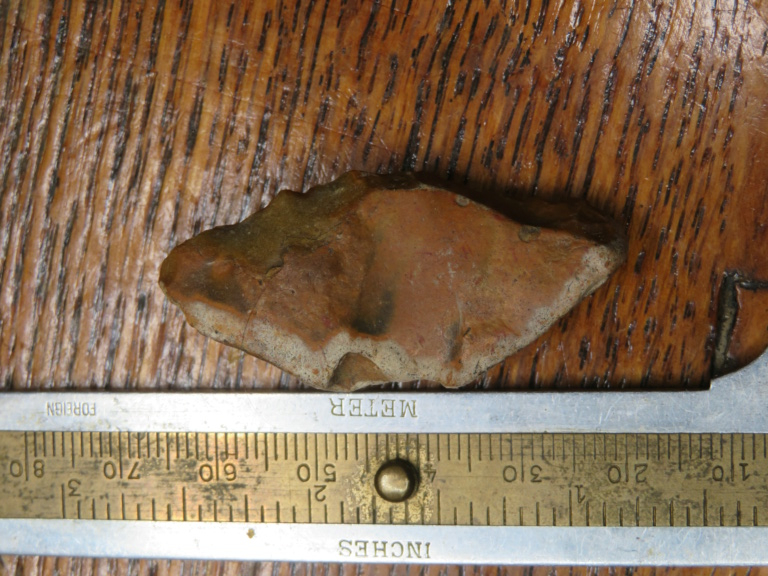
The Elephant Front Half Motif:
In the second discovery, we have another suspected Australopithecus face frontal as displayed often on https://eoliths.blogspot.com we also encounter a subtle yet masterfully crafted elephant front half motif. The artist's attention to detail is evident in the meticulously worked trunk, showcasing artistic finesse even in miniature form the Elephant half is likely combined with the gorilla strut glyph. These findings remind us of the enduring fascination with the natural world in prehistoric art. A Laughing chimp face profile can also be seen top right, left facing, nice ear detailing, and eye ball detail.



Unveiling Our Ancestral Imagination:
As we delve deeper into the world of portable rock art and face effigies, it becomes clear that these creations are not merely decorative but a reflection of the human imagination and connection to the past. They offer us a glimpse into the artistic endeavours of ancient cultures, providing valuable insights into their beliefs, rituals, and the world they inhabited.
In conclusion, these newfound discoveries underscore the significance of portable rock art and face effigies in our exploration of prehistoric art and culture. By sharing these incredible finds, we continue the tradition of unearthing the mysteries of our past. If you have any insights, questions, or thoughts to share about portable rock art, figurine stones, or the world of prehistoric effigies, please do so below. Your contributions to this discussion are invaluable.
Let's embark on this journey of discovery together!
Today, I'm thrilled to share with you two intriguing discoveries in the realm of portable rock art: enigmatic face effigies that may offer a glimpse into the world of Australopithecus. These remarkable finds, characterized by their unique features and artistic detailing, shed light on our prehistoric past and the enduring fascination with stone figurines and effigies.
Portable Rock Art: A Gateway to Our Ancestral World:
Portable rock art is a fascinating avenue for exploring the rich tapestry of prehistoric art. These miniature stone creations provide us with a window into the artistic expressions of our ancient ancestors, allowing us to connect with their thoughts, beliefs, and creativity across time.
The Australopithecus Connection:
The first discovery showcases a possible Australopithecus face frontal, a representation that could hold profound implications for our understanding of early hominins. The face features, though subtle, bear resemblance to the facial structures associated with Australopithecus. The intricacies of this rock art piece evoke a sense of wonder and curiosity about the artistic prowess of our distant relatives.
Pigmented Eye Feature Mystery:
The first of the face effigies we'll be discussing displays an enigmatic pigmented eye feature. This detail raises intriguing questions about the use of pigments in ancient art and its potential significance. Other possible features include a possible crest, and a stripe down the centre of the face, both features I've displayed before in this face type. Could this hint at ritualistic or symbolic practices among early humans? It's a mystery worth exploring further and I'm preparing some more truly ground-breaking work in this area..
Rotate this one CW to see the face.

The Elephant Front Half Motif:
In the second discovery, we have another suspected Australopithecus face frontal as displayed often on https://eoliths.blogspot.com we also encounter a subtle yet masterfully crafted elephant front half motif. The artist's attention to detail is evident in the meticulously worked trunk, showcasing artistic finesse even in miniature form the Elephant half is likely combined with the gorilla strut glyph. These findings remind us of the enduring fascination with the natural world in prehistoric art. A Laughing chimp face profile can also be seen top right, left facing, nice ear detailing, and eye ball detail.



Unveiling Our Ancestral Imagination:
As we delve deeper into the world of portable rock art and face effigies, it becomes clear that these creations are not merely decorative but a reflection of the human imagination and connection to the past. They offer us a glimpse into the artistic endeavours of ancient cultures, providing valuable insights into their beliefs, rituals, and the world they inhabited.
In conclusion, these newfound discoveries underscore the significance of portable rock art and face effigies in our exploration of prehistoric art and culture. By sharing these incredible finds, we continue the tradition of unearthing the mysteries of our past. If you have any insights, questions, or thoughts to share about portable rock art, figurine stones, or the world of prehistoric effigies, please do so below. Your contributions to this discussion are invaluable.
Let's embark on this journey of discovery together!
 Re: Portable rock art - Faces
Re: Portable rock art - Faces
Sun Nov 12, 2023 12:32 pm
Have you ever marveled at the ability of ancient civilizations to capture the essence of the natural world around them? A recent discovery might just pique your interest—a flint rock sculpture believed to be an ancient piece of portable rock art. This isn't just any carving; it appears to show a detailed ape face, frontal view, with remarkable eye and pupil detail reminiscent of a chimpanzee.
The skillfully sculpted flint piece highlights the artistry of our ancestors, who may have lived over 1,000,000 years ago. The attention to detail is astounding. You can clearly make out the facial features that are characteristic of apes, especially chimpanzees. The eyes, complete with pupils, offer a window into the artist's intent and skill, suggesting a level of sophistication in early human art that the official narrative writers are seemingly blissfully unaware of.
This artifact isn't just a fascinating find for historians and archaeologists; it's a treasure for any art enthusiast or anyone interested in the development of human creativity. The fact that this sculpture is portable indicates that it may have held significant value to its creator, possibly serving as a talisman, a teaching tool, a cherished possession, or as Ive maintained all along a type of silent communication tool.
The discovery of this ancient flint sculpture opens up a dialogue about the origins of representational art and the connections our ancestors had with the world around them. It challenges us to consider the ways in which they might have perceived and interacted with the same species we share our planet with today, but also strongly challenges the official ancient human paradigm.
What's your take on this incredible find? Could this be one of the earliest known representations of a chimpanzee in ancient art? Join the discussion and share your thoughts on this remarkable piece of prehistoric artistry.
#AncientArt #RockArt #PrehistoricSculpture #Archaeology #ArtHistory #ChimpanzeeCarving
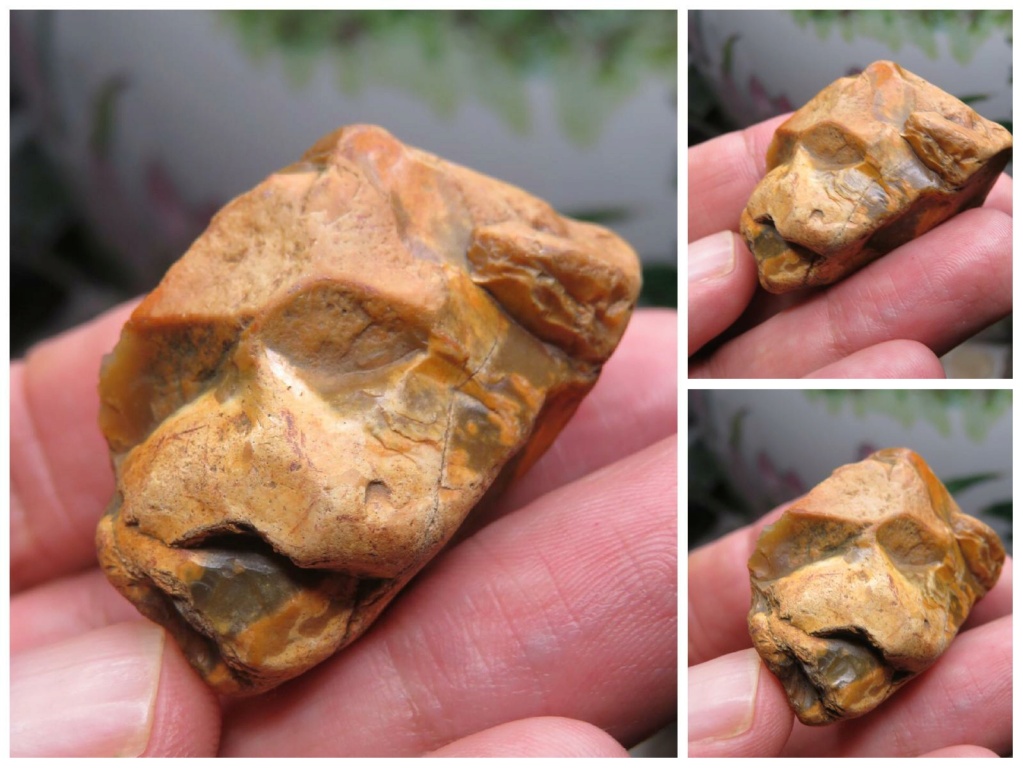
The skillfully sculpted flint piece highlights the artistry of our ancestors, who may have lived over 1,000,000 years ago. The attention to detail is astounding. You can clearly make out the facial features that are characteristic of apes, especially chimpanzees. The eyes, complete with pupils, offer a window into the artist's intent and skill, suggesting a level of sophistication in early human art that the official narrative writers are seemingly blissfully unaware of.
This artifact isn't just a fascinating find for historians and archaeologists; it's a treasure for any art enthusiast or anyone interested in the development of human creativity. The fact that this sculpture is portable indicates that it may have held significant value to its creator, possibly serving as a talisman, a teaching tool, a cherished possession, or as Ive maintained all along a type of silent communication tool.
The discovery of this ancient flint sculpture opens up a dialogue about the origins of representational art and the connections our ancestors had with the world around them. It challenges us to consider the ways in which they might have perceived and interacted with the same species we share our planet with today, but also strongly challenges the official ancient human paradigm.
What's your take on this incredible find? Could this be one of the earliest known representations of a chimpanzee in ancient art? Join the discussion and share your thoughts on this remarkable piece of prehistoric artistry.
#AncientArt #RockArt #PrehistoricSculpture #Archaeology #ArtHistory #ChimpanzeeCarving

Baggpuss likes this post
 Re: Portable rock art - Faces
Re: Portable rock art - Faces
Sun Nov 12, 2023 12:53 pm
Discover the intrigue of prehistoric creativity with a remarkable new find in the world of portable rock art. In a striking example of ancient workmanship, a recent discovery showcases an intricate optical illusion carved into flint: a fusion of an elephant's front half with a swan-like water bird. This subtle yet clearly visible depiction not only captures the imagination but also supports my own groundbreaking research into the cognitive abilities of our ancestors.
This portable rock art piece is a testament to the sophistication of prehistoric artists, who skillfully created a dual illusion that remains perceptible to modern viewers. The elephant's robust form, juxtaposed with the graceful lines of a water bird, reveals a complex understanding of both the natural world and artistic expression just as Salvador Dali many thousands of years later.
But the surprises don't stop there. Upon closer inspection, the lower right corner of the stone reveals what appears to be a highly detailed Neanderthal-like face. This exceptional detail adds a new layer of depth to the artifact, suggesting that our prehistoric relatives could have been experimenting with representational art far earlier than previously thought, notice the eye, eye pupil, brow ridge, nose and lip detailing, almost photorealistic.
The discovery of this flint sculpture is a significant contribution to the understanding of early human artistry and symbolization. It challenges us to rethink the narrative of prehistoric art and the cognitive capabilities of early hominids or extremely ancient modern humans .
.
Delve into the mystery and marvel at the skill of ancient hands. Could this piece be the key to unlocking new perspectives on Neanderthal intelligence and creativity? Join the conversation and explore the profound implications of this incredible prehistoric find.
#PrehistoricArt #PortableRockArt #AncientSculpture #OpticalIllusion #NeanderthalArt #ElephantAndSwanIllusion #ArchaeologyDiscovery

This portable rock art piece is a testament to the sophistication of prehistoric artists, who skillfully created a dual illusion that remains perceptible to modern viewers. The elephant's robust form, juxtaposed with the graceful lines of a water bird, reveals a complex understanding of both the natural world and artistic expression just as Salvador Dali many thousands of years later.
But the surprises don't stop there. Upon closer inspection, the lower right corner of the stone reveals what appears to be a highly detailed Neanderthal-like face. This exceptional detail adds a new layer of depth to the artifact, suggesting that our prehistoric relatives could have been experimenting with representational art far earlier than previously thought, notice the eye, eye pupil, brow ridge, nose and lip detailing, almost photorealistic.
The discovery of this flint sculpture is a significant contribution to the understanding of early human artistry and symbolization. It challenges us to rethink the narrative of prehistoric art and the cognitive capabilities of early hominids or extremely ancient modern humans
Delve into the mystery and marvel at the skill of ancient hands. Could this piece be the key to unlocking new perspectives on Neanderthal intelligence and creativity? Join the conversation and explore the profound implications of this incredible prehistoric find.
#PrehistoricArt #PortableRockArt #AncientSculpture #OpticalIllusion #NeanderthalArt #ElephantAndSwanIllusion #ArchaeologyDiscovery

amytaylorlangston@gmail.c likes this post
 Portable Rock Art
Portable Rock Art
Wed Dec 13, 2023 3:05 pm
Suspected Australopithecus in this genuine ancient portable rock art sculpture. Rather uncommon to find this type (broad headed) but they are around, looks rather like Darth so I wander how many naysayers will claim this debunks the whole of the worlds portable rock art? Sadly enough I would get more interest than what this incredible ancient piece of art deserves by selling it on eBay as a completely random stone depicting Vader to some wealthy Star Wars fan, an insult to the paleolithic artist.


WesyKyCreekWalker likes this post
 amytaylorlangston@gmail.c
amytaylorlangston@gmail.c- Posts : 413
Join date : 2020-11-03
Age : 54
Location : Ok/Tx
 Re: Portable rock art - Faces
Re: Portable rock art - Faces
Mon Dec 18, 2023 2:18 pm
This last pic here reminds me of a mere cat
 Rock Art
Rock Art
Thu Jan 18, 2024 8:53 am
Some more Rock art face finds, nothing super amazing but good enough to share, the usual kinds of faces to expect. The blue-grey chimp pebble has quite a few other faces, and clear modification and evidence of cognition to create the partially symmetrical chimpanzee face. The orange coloured portable rock art piece has a suspected impression of a Homo-Naledi face (BEST VIEWED ON THE SMALL SCREEN), the profile of Naledi is easily confused with that of a baboon, but here I feel this one is fairly distinct. Ferrous deposition is seen in the white stone around one of the 'eye' features which also displays flake removal, perhaps an iron 'tool' was used to perform this?

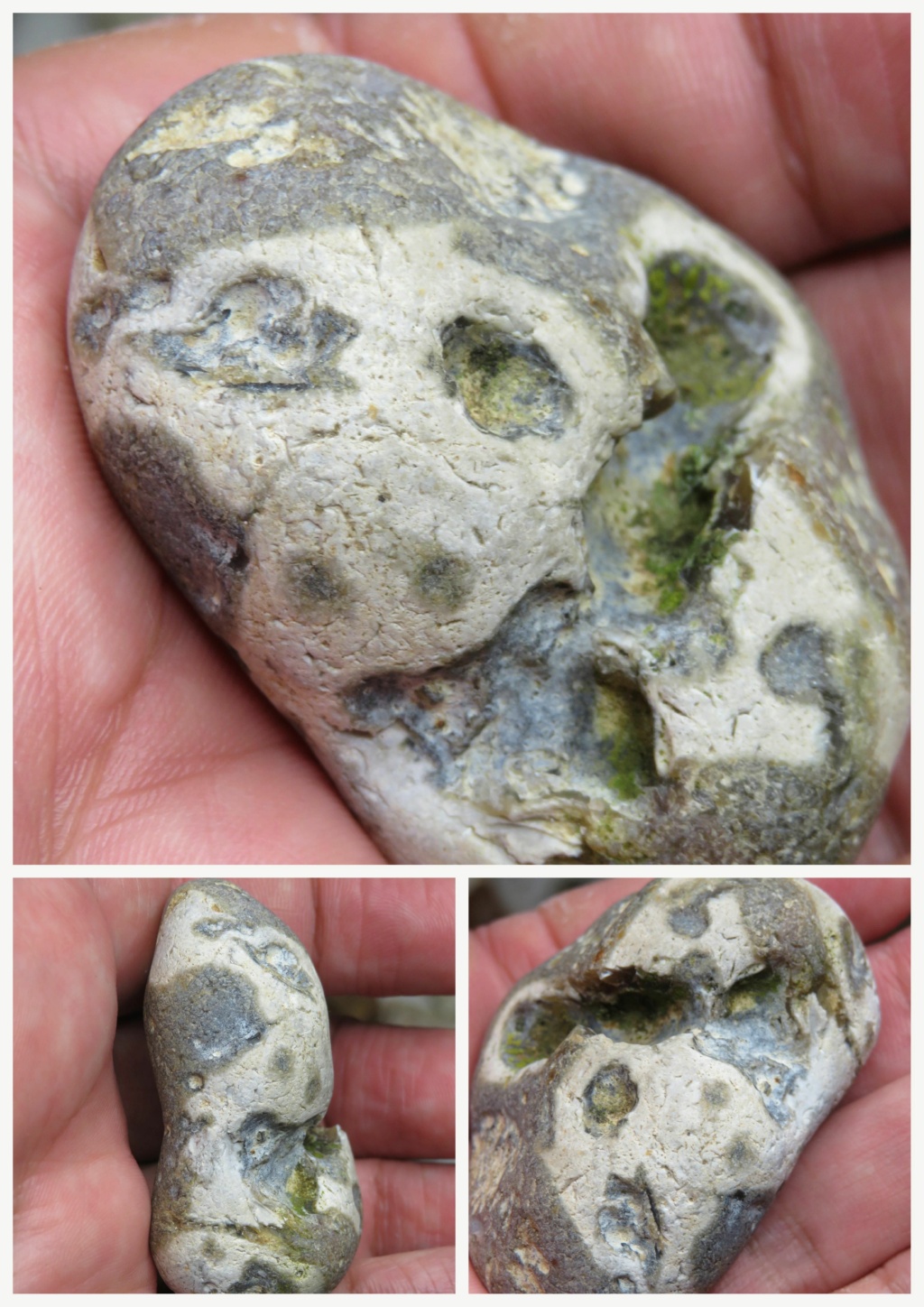




amytaylorlangston@gmail.c likes this post
 Portable rock art
Portable rock art
Wed Feb 14, 2024 10:15 am
I recently discovered another Palaeolithic-era flint tool, which appears to have been used similarly to a hand axe, but with additional features that suggest it might have been used for digging and prying. Un-remarkably, this tool exhibits a carved figure resembling an archaic human face on the front, though the nose appears quite disjointed. Intriguingly, the facial depiction follows the world-wide recognized motif of 'one eye open, one eye missing or closed.' While I was not the first to identify this motif, my research has helped to demystify it significantly, especially with the insight that it represents a winking face. This interpretation is supported by the distinct feature of a raised eyebrow over the open eye, a detail I've observed in other figurative face impressions on my finds.
This motif is predominantly found in human or archaic human representations, but it's not exclusive to them. An example can be seen in a bear face front carving I discovered and presented on my original website in 2012. The visible eye on the right of this tool contains additional fascinating details. It showcases a composite eyeball, remarkably still in place without any apparent adhesive. There's evident crystallization within this structure and an interpreted figurative vulva (arch at the top, glistening), closely paralleling the representations found in the elephant section of this forum. Additionally, the eye seems to portray a bruised appearance, so a rather battered and bruised archaic hominid description is inferred.
These intricate details not only provide a glimpse into the artistic capabilities and symbolic expressions of Palaeolithic humans but also enrich our understanding of their cultural and ritualistic practices. The tool is a testament to the complexity and depth of ancient human craftsmanship and belief systems.

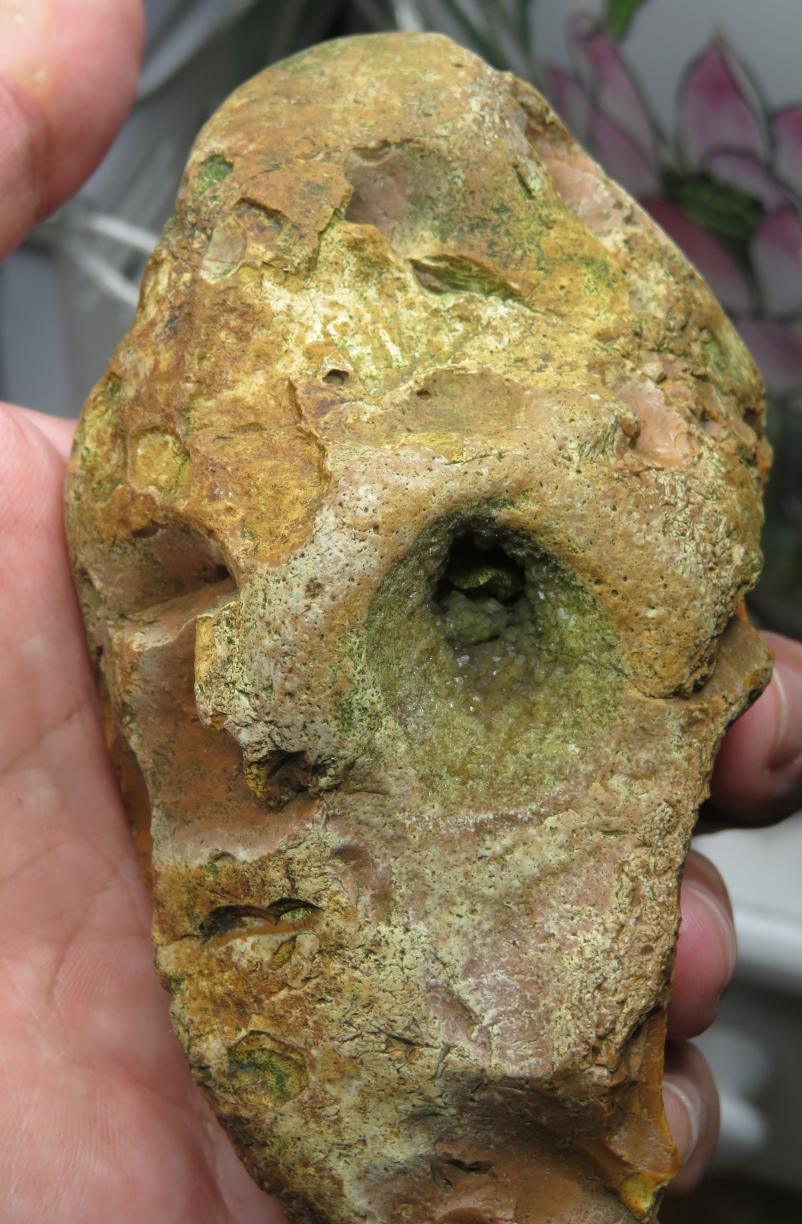

Those well-versed in interpreting such ancient artifacts might find additional imagery in these findings. Aside from the hominid-like face and exacting thumb shape, there could be subtler representations, such as a pachyderm head and a depiction resembling a beaked dinosaur.
Such imagery in Palaeolithic artifacts can be open to various interpretations, often reflecting the complex relationship between early humans and their environment. The potential depiction of a pachyderm and a dinosaur-like figure could indicate a deeper awareness of the surrounding fauna or perhaps mythological or storytelling aspects embedded within their culture, however my original recognition of a world-wide common set of glyphs and conventions is more indicative of a kind of palaeolithic language.
These kinds of findings continue to intrigue and challenge our understanding of early human art and symbolism, environment and evolution. Each discovery contributes to the broader narrative of human cognitive and cultural development, offering insights into how our ancestors perceived and interacted with the world around them. My research and findings strongly challenge the mainstream archaeological narrative.
For those interested in learning more about the interpretation of Palaeolithic artifacts and the reading skills required to decipher such ancient art, further research and engagement with my archaeological literature and forums are highly recommended. I've provide a wealth of information and perspectives that can deepen the understanding of these fascinating artifacts.


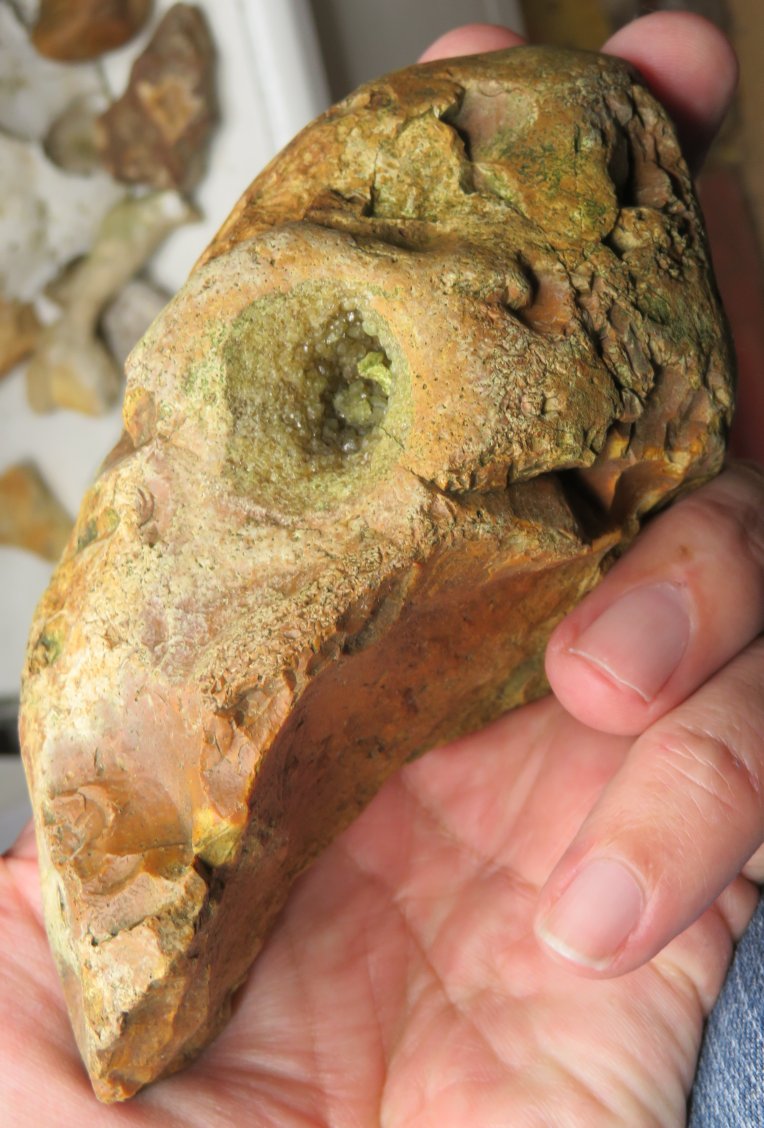
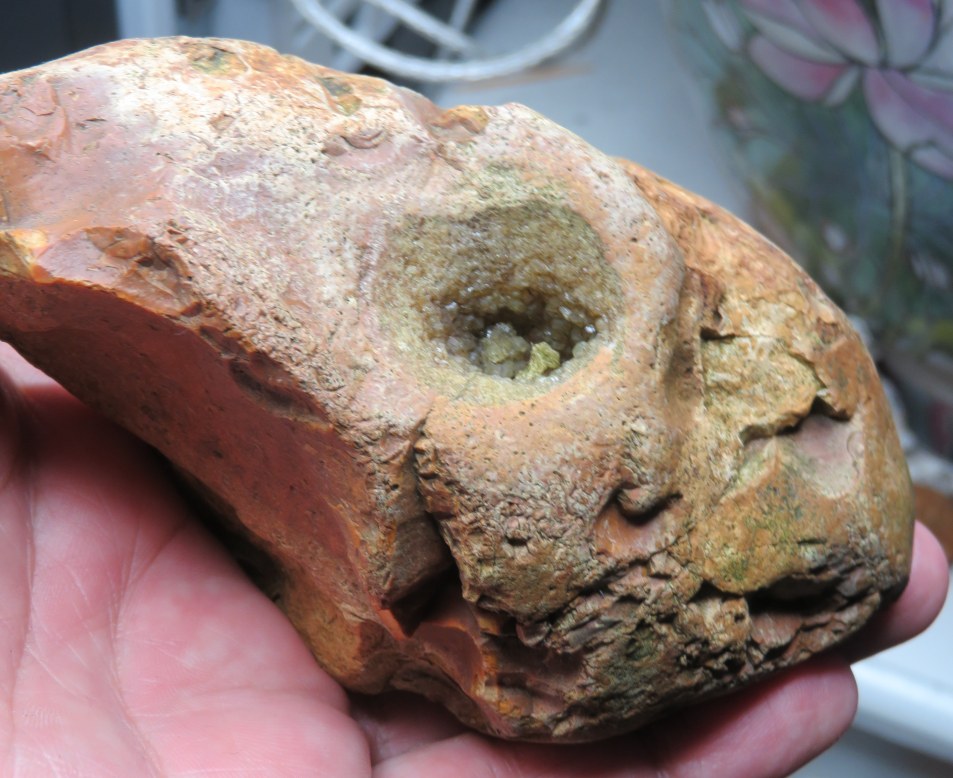

This motif is predominantly found in human or archaic human representations, but it's not exclusive to them. An example can be seen in a bear face front carving I discovered and presented on my original website in 2012. The visible eye on the right of this tool contains additional fascinating details. It showcases a composite eyeball, remarkably still in place without any apparent adhesive. There's evident crystallization within this structure and an interpreted figurative vulva (arch at the top, glistening), closely paralleling the representations found in the elephant section of this forum. Additionally, the eye seems to portray a bruised appearance, so a rather battered and bruised archaic hominid description is inferred.
These intricate details not only provide a glimpse into the artistic capabilities and symbolic expressions of Palaeolithic humans but also enrich our understanding of their cultural and ritualistic practices. The tool is a testament to the complexity and depth of ancient human craftsmanship and belief systems.



Those well-versed in interpreting such ancient artifacts might find additional imagery in these findings. Aside from the hominid-like face and exacting thumb shape, there could be subtler representations, such as a pachyderm head and a depiction resembling a beaked dinosaur.
Such imagery in Palaeolithic artifacts can be open to various interpretations, often reflecting the complex relationship between early humans and their environment. The potential depiction of a pachyderm and a dinosaur-like figure could indicate a deeper awareness of the surrounding fauna or perhaps mythological or storytelling aspects embedded within their culture, however my original recognition of a world-wide common set of glyphs and conventions is more indicative of a kind of palaeolithic language.
These kinds of findings continue to intrigue and challenge our understanding of early human art and symbolism, environment and evolution. Each discovery contributes to the broader narrative of human cognitive and cultural development, offering insights into how our ancestors perceived and interacted with the world around them. My research and findings strongly challenge the mainstream archaeological narrative.
For those interested in learning more about the interpretation of Palaeolithic artifacts and the reading skills required to decipher such ancient art, further research and engagement with my archaeological literature and forums are highly recommended. I've provide a wealth of information and perspectives that can deepen the understanding of these fascinating artifacts.





John likes this post
 John
John- Posts : 29
Join date : 2023-07-12
 X ray cert. Welding
X ray cert. Welding
Wed Feb 21, 2024 1:28 am
Center pic in set of 5.
Looks like a fairly large raptor on the neck of that left looking giraffe. Is that Neovenator biting the top of Europasaurus's head looking right ?
Was that predator hat welded onto the main piece?
Leaning back against one of those giant pillow rock walls like down in Peru. A person might ponder weather they may have had some way of changing the state of matter that we no longer remember.
Making rock soft, pliable or lighter.
 Re: Portable rock art - Faces
Re: Portable rock art - Faces
Wed Feb 21, 2024 8:50 am
John wrote:
Center pic in set of 5.
Looks like a fairly large raptor on the neck of that left looking giraffe. Is that Neovenator biting the top of Europasaurus's head looking right ?
Was that predator hat welded onto the main piece?
Leaning back against one of those giant pillow rock walls like down in Peru. A person might ponder weather they may have had some way of changing the state of matter that we no longer remember.
Making rock soft, pliable or lighter.
I appreciate your input and the analytical approach you've taken towards interpreting the figures on the artifact. It's indeed crucial to distinguish intentional representations from pareidolia, which can lead us to see familiar patterns where none were intended. By focusing on the complete forms that integrate with the artifact's contours, we can more confidently discern genuine depictions from natural rock formations, this is my methodology, and why I don't often go into the smaller figures set within the finds. However I do see a very plausible Giraffe depiction, complete with hoofs, and even a tail in some of the images, you have a good eye that's for sure, I also see a very plausible T-rex/Raptor head in the first two images when turned CCW 90
My emphasis on recognizing the artifact as a whole before delving into the minutiae aligns well with a methodical approach to such discoveries. Acknowledgment of the artifact's authenticity as a crafted piece is a vital step in its study.
I am unaware of any methods to change the state of matter in flint, if it could be done I guess we would see little blobby eyes stuck on finds like a child does with play dough, that thin line you can see does not penetrate the stone, no evidence of it on the other side. Those people making claims about stones in Peru need to think through such theories with a little more logic, like 'Why are the stones such diverse shapes, surely if they could mould them they would be nice and even?'
John likes this post
Permissions in this forum:
You cannot reply to topics in this forum

